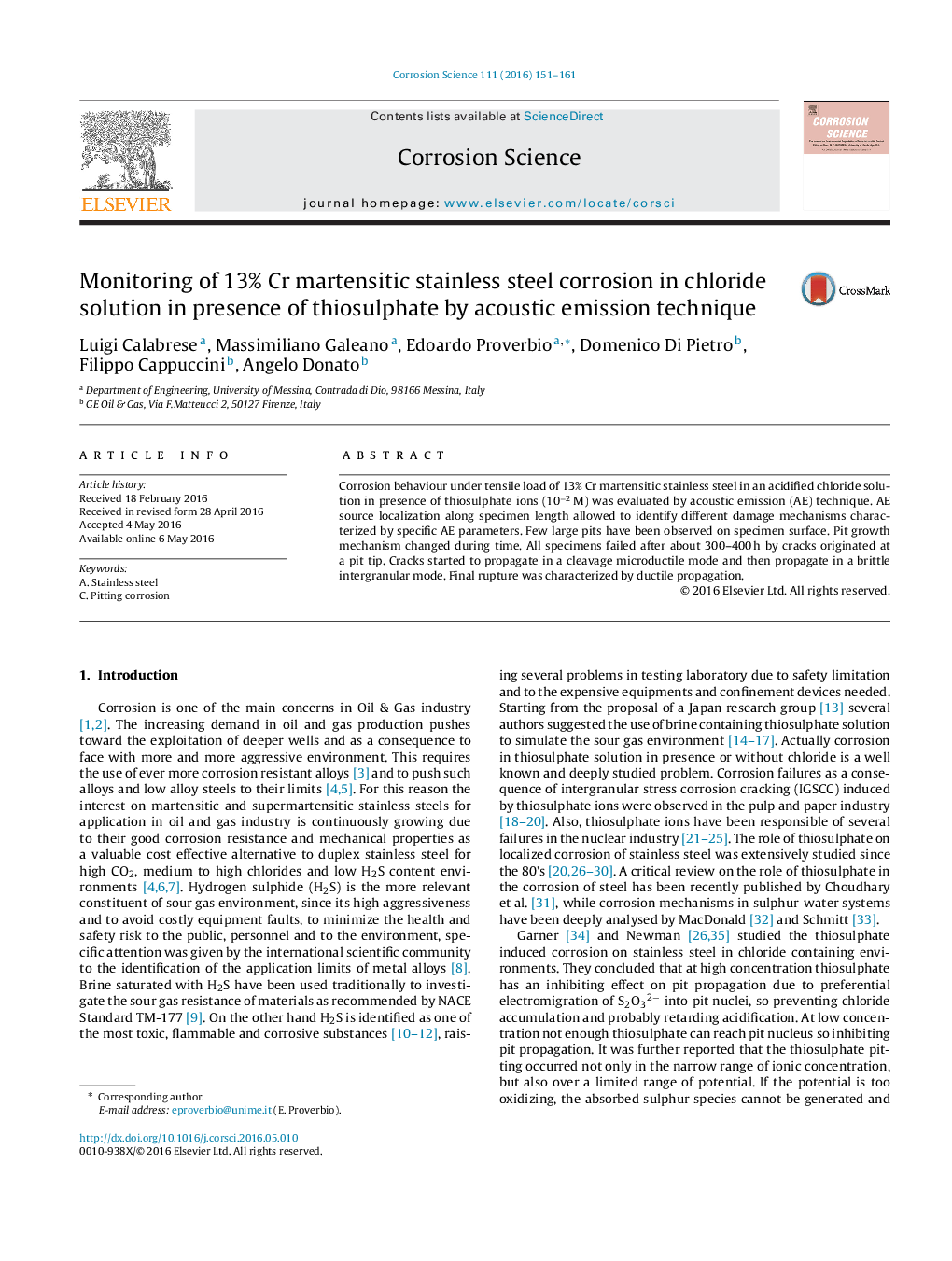| Article ID | Journal | Published Year | Pages | File Type |
|---|---|---|---|---|
| 1468287 | Corrosion Science | 2016 | 11 Pages |
•A martensitic stainless steel was tested in a chloride solution in presence of thiosulphate ions.•Pit growth mechanism was observed to change during time.•Acoustic emission source localization along specimen length allowed to identify different damage mechanisms.•Acoustic emission technique allowed to identify specific parameter values for the different damage mechanisms.
Corrosion behaviour under tensile load of 13% Cr martensitic stainless steel in an acidified chloride solution in presence of thiosulphate ions (10−2 M) was evaluated by acoustic emission (AE) technique. AE source localization along specimen length allowed to identify different damage mechanisms characterized by specific AE parameters. Few large pits have been observed on specimen surface. Pit growth mechanism changed during time. All specimens failed after about 300–400 h by cracks originated at a pit tip. Cracks started to propagate in a cleavage microductile mode and then propagate in a brittle intergranular mode. Final rupture was characterized by ductile propagation.
